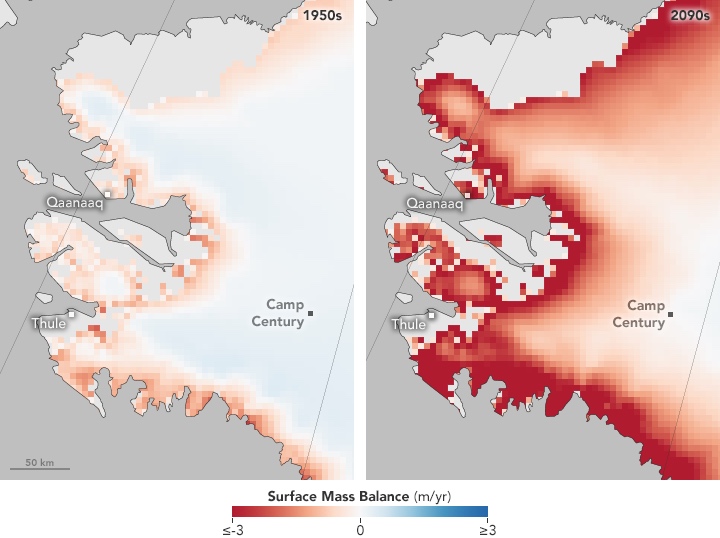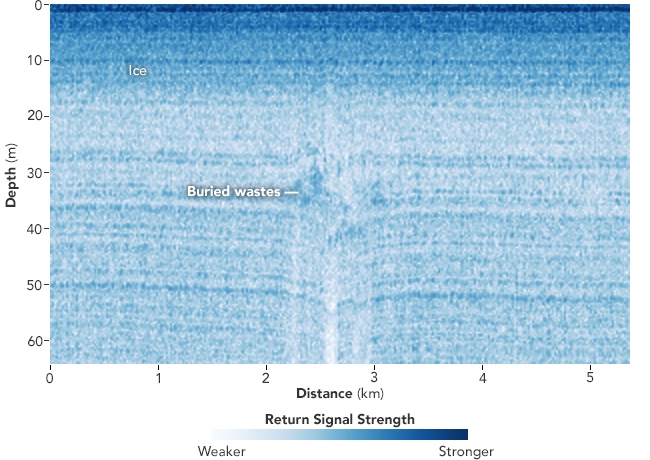Maps Show Where Melting Glaciers Will Reveal Cold-War-Era Nuclear Waste

Melting glaciers have revealed a number of surprises over the past few years, from Viking artifacts in Norway to World War I burials in the Italian Alps. And one day, if global warming continues its current course, Greenland's retreating ice sheet could expose a more troubling relic of the past: a Cold War military base and whatever biological, chemical and radioactive waste is left inside, scientists say.
NASA's Earth Observatory posted maps today (Jan. 31) that show the changes expected to take place near the site of Camp Century, a once-secret U.S. military base built in 1959 primarily to test the possibility of launching nuclear missiles from the Arctic to the Soviet Union.
The site was abandoned in 1967 and is now buried about 100 feet (30 meters) beneath a crust of snow and ice. But the maps, analyzed as part of a study published in August 2016 in the journal Geophysical Research Letters, show that because of ice loss, Camp Century could become an environmental hazard by the end of this century. [Photos: Top-Secret, Cold War-Era Military Base in Greenland]
"When we looked at the climate simulations, they suggested that rather than perpetual snowfall, it seems that as early as 2090, the site could transition from net snowfall to net melt," William Colgan, the study's lead author and an assistant professor in Earth sciences at York University in Toronto, said in a statement last year. "Once the site transitions from net snowfall to net melt, it's only a matter of time before the wastes melt out; it becomes irreversible."
The color-coded map reveals places where the ice surface is projected to drop 10 feet (3 m) or more per year (dark red), areas where no change is expected in this so-called surface mass balance (white) and areas expected to see slight gains in ice cover (light blue).
Colgan and his colleagues took an inventory of the waste left in Camp Century and found that the site contains about 53,000 gallons (200,000 liters) of diesel fuel, 6.3 million gallons (24 million liters) of wastewater, including sewage, as well as unknown volumes of low-level radioactive coolant and polychlorinated biphenyls (PCBs). These pollutants threaten to seep into marine ecosystems as the ice melts, the researchers said.
Eventually, the cleanup of Camp Century could lead to one of the first climate-change-related political disputes, as international law is apparently ambitious about the responsibility for already-discarded hazardous waste, the researchers noted.
Get the world’s most fascinating discoveries delivered straight to your inbox.
Colgan told the Earth Observatory that this example "is just one in a very long list of reasons to say, 'How do we try [to] mitigate climate change now?'"
Original article on Live Science.




